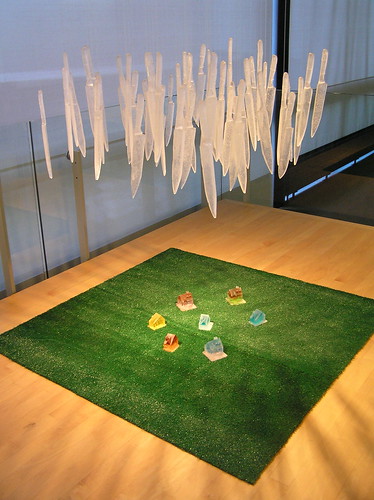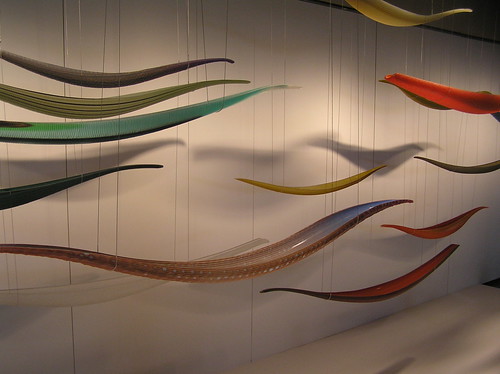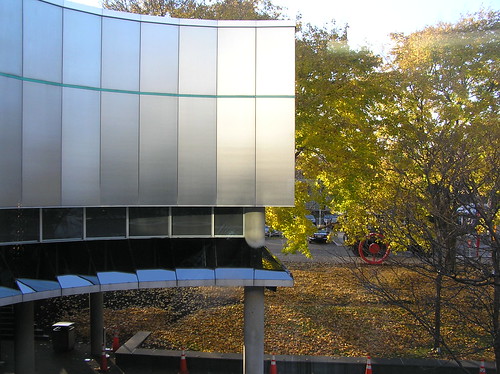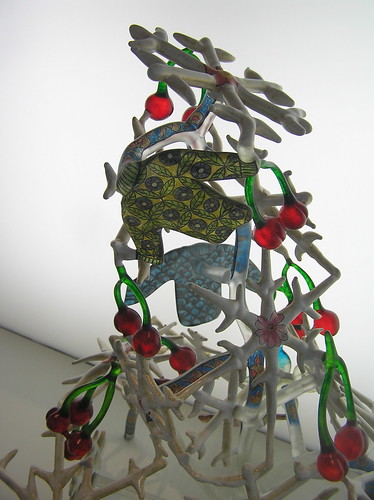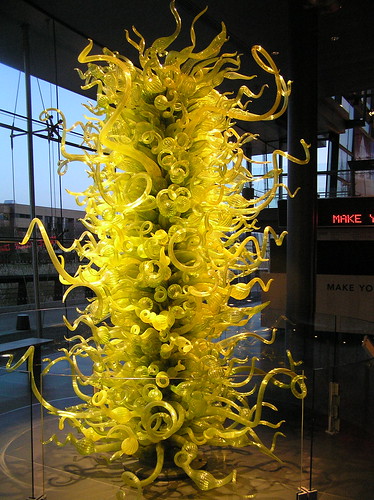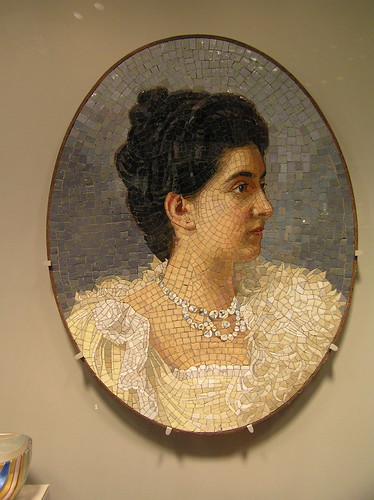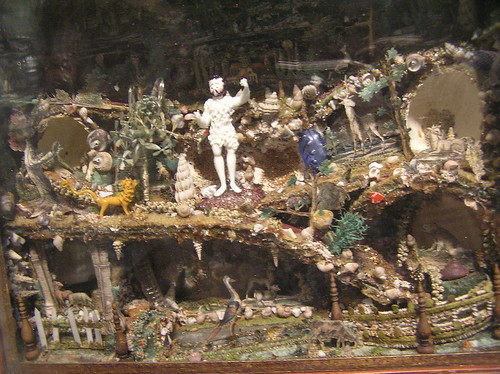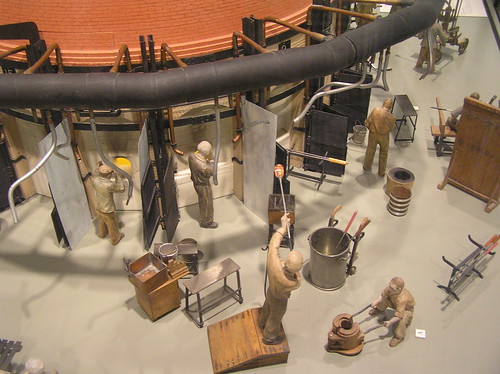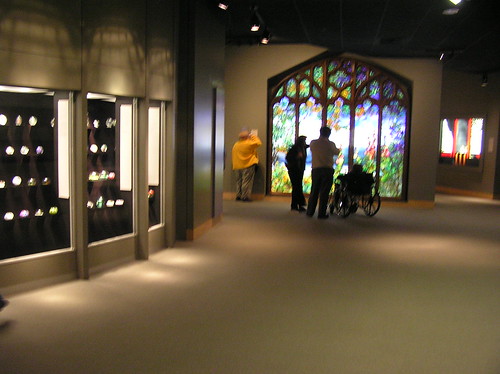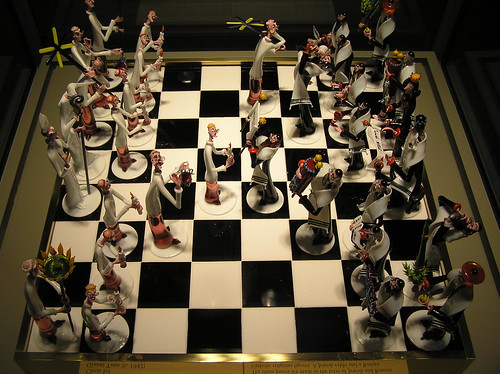Luigi Serafini
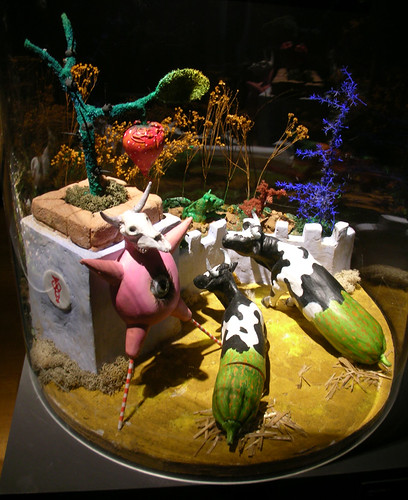 In June we visited the Contemporary Museum of Modern Art in Milan, and the ongoing exhibit they had showcased there was for someone who I was unfamiliar with but went by the name of SERAFINI in huge, bright, bold, majectic letters. I actually didn't see these letters presented as how I just described--they were really just small letters on a small sign, but by the time I left the museum this name left a grandeur impression as such. And that is exactly what his work was to me: grandiose and eye-popping. What we found inside were huge paintings filling up several rooms that depicted the most unusual scenes: a couple picnicing on fake grass amidst machine guns and dead Santa Clauses, Jesus playing crochet with a skullhead while a dragon sleeps in the background and a woman bathes in a checkered tub, zookeepers feeding buckets of pills to a room full of blue wind-up alligators.....i can keep going. These works were so large and finely detailed, but not just limited to canvas. Sculptures, installations, and things I don't even know what to call, all displayed this similar monster-scaled fashion. Even his smaller drawings filled entire hallways and had enough material to pack several books. This guy must have been an unimaginal workhorse, a beast to put it lightly. I was quite lucky to stumble upon his exhibit, and months later I investigated him on the web and came across a few bios. The following is from an ironically small site dedicated to Serafini which can be found here.
In June we visited the Contemporary Museum of Modern Art in Milan, and the ongoing exhibit they had showcased there was for someone who I was unfamiliar with but went by the name of SERAFINI in huge, bright, bold, majectic letters. I actually didn't see these letters presented as how I just described--they were really just small letters on a small sign, but by the time I left the museum this name left a grandeur impression as such. And that is exactly what his work was to me: grandiose and eye-popping. What we found inside were huge paintings filling up several rooms that depicted the most unusual scenes: a couple picnicing on fake grass amidst machine guns and dead Santa Clauses, Jesus playing crochet with a skullhead while a dragon sleeps in the background and a woman bathes in a checkered tub, zookeepers feeding buckets of pills to a room full of blue wind-up alligators.....i can keep going. These works were so large and finely detailed, but not just limited to canvas. Sculptures, installations, and things I don't even know what to call, all displayed this similar monster-scaled fashion. Even his smaller drawings filled entire hallways and had enough material to pack several books. This guy must have been an unimaginal workhorse, a beast to put it lightly. I was quite lucky to stumble upon his exhibit, and months later I investigated him on the web and came across a few bios. The following is from an ironically small site dedicated to Serafini which can be found here.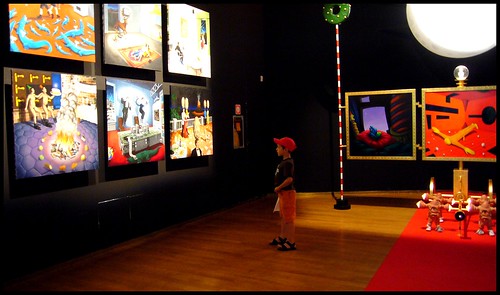 "Luigi Serafini, globetrotter and architect, historian and gastronomer, set and costume designer, a man who has opened a laboratory of ceramics on the border between art and craft, an industrial designer, a painter, and a writer of stories and articles.
"Luigi Serafini, globetrotter and architect, historian and gastronomer, set and costume designer, a man who has opened a laboratory of ceramics on the border between art and craft, an industrial designer, a painter, and a writer of stories and articles.
Serafini was born in Rome in 1949. In the 1970's, he commenced his career as a globetrotter and then as an architect.
Subsequently he created the "Codex Seraphinianus" (published by Franco Maria Ricci, Milan 1981), which has now reached its sixth edition, and "Pulcinellopedia (piccola)" (published by Longanesi, Milan 1983), which is dedicated to industrial design.
The extraordinary "Codex Seraphinianus" is a book of 400 pages in the form of an encyclopedia -- graphical letters, signs, animals and plants, anatomy and chemistry -- creating a book to view and to admire. Its writing, completely invented, could never be deciphered even with the most technologically advanced machine, but it can be intuited, loaded with emotional meaning that washes over the eyes.
He has published stories in Bompiani and in Archinto, and has written articles for several magazines and newspapers.
He is an architect and designer. He has created scenery, lighting and costumes for il Teatro alla Scala and the Piccolo Teatro di Milano. He has done set designs for RAI, television acronyms/logos in computer graphics, and a talk-show program for Radio Three. He collaborated with Federico Fellini on his final film, "La voce della luna" (The Voice of the Moon), for which he developed preliminary designs.
He collaborated with Federico Fellini on his final film, "La voce della luna" (The Voice of the Moon), for which he developed preliminary designs.
He has been a visiting artist at the Banff Center in Alberta, Canada, and has had exhibitions at the Fondazione Mudima di Milano, the XIII Quadriennale, and the Galleria Nazionale d'Arte Moderna (National Gallery of Modern Art) in Rome.
He has opened a laboratory of ceramics in Umbria, operating between art and craft, he does personal exhibitions, especially in Holland, and participates in numerous collectives.
At the moment he paints paintings and he writes in the "Passeggiate Romane" ("Roman Walks") and "il Messaggero" ("The Messenger") and is occupied with gastronomy.
He lives between Rome and Milan, in an imaginary city where the paths of the culverts surface in Piazza Cordusio." -jaguarman



